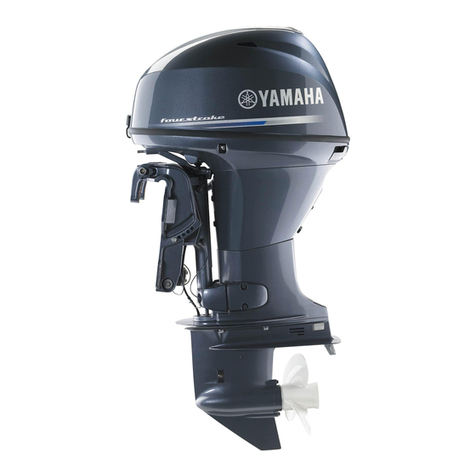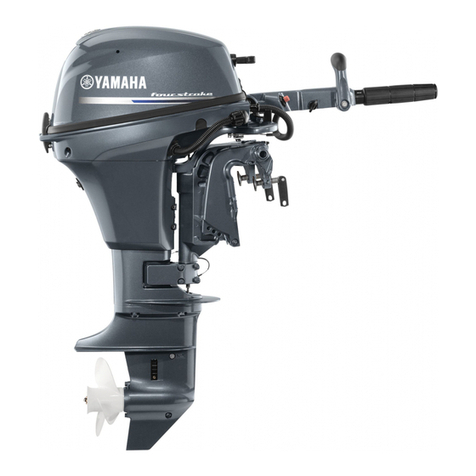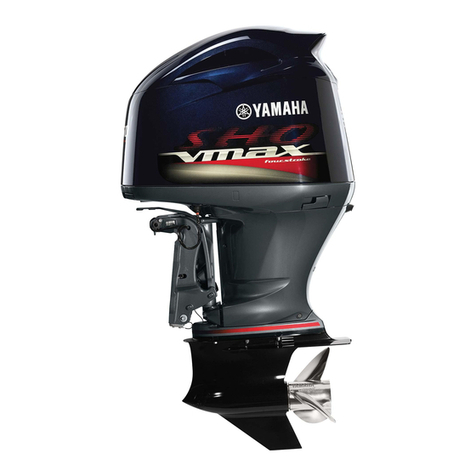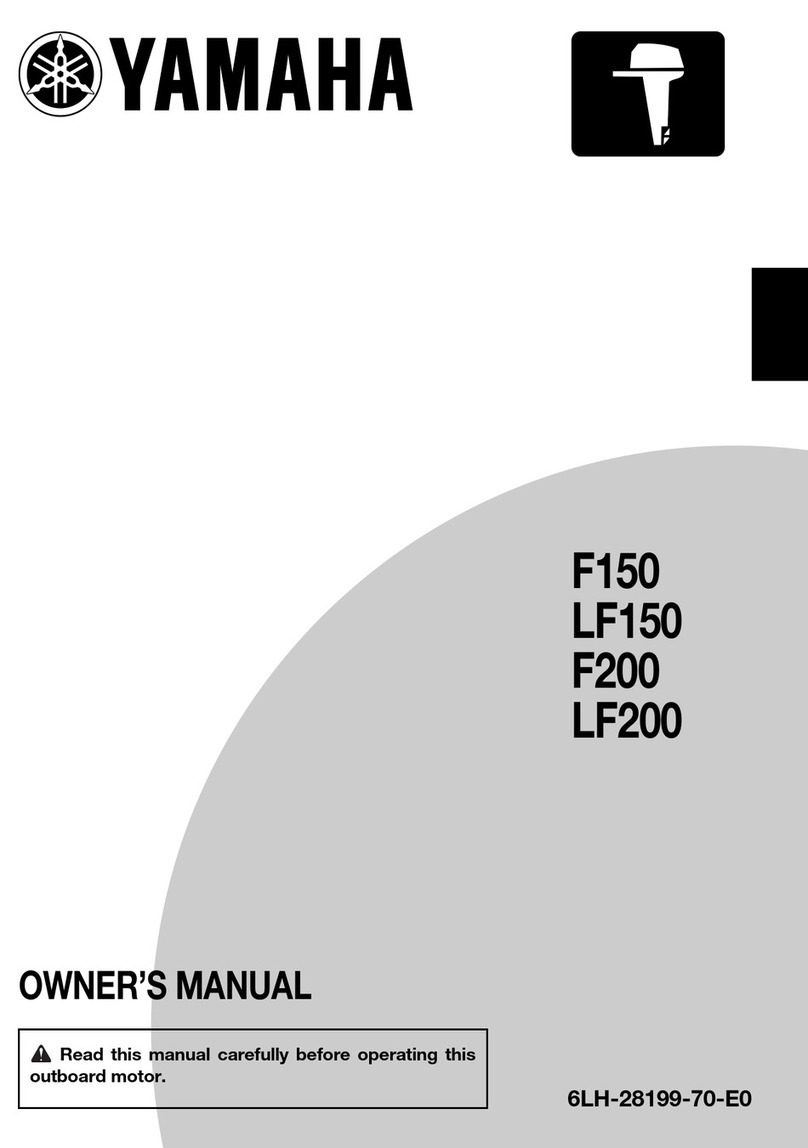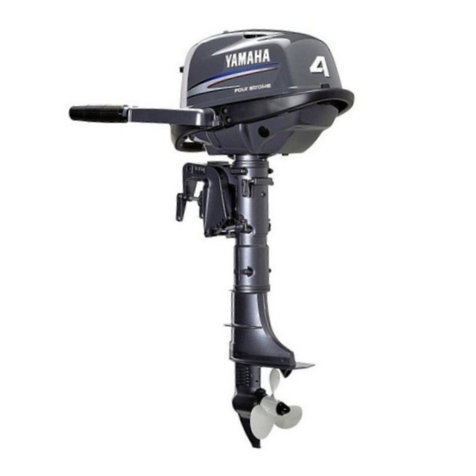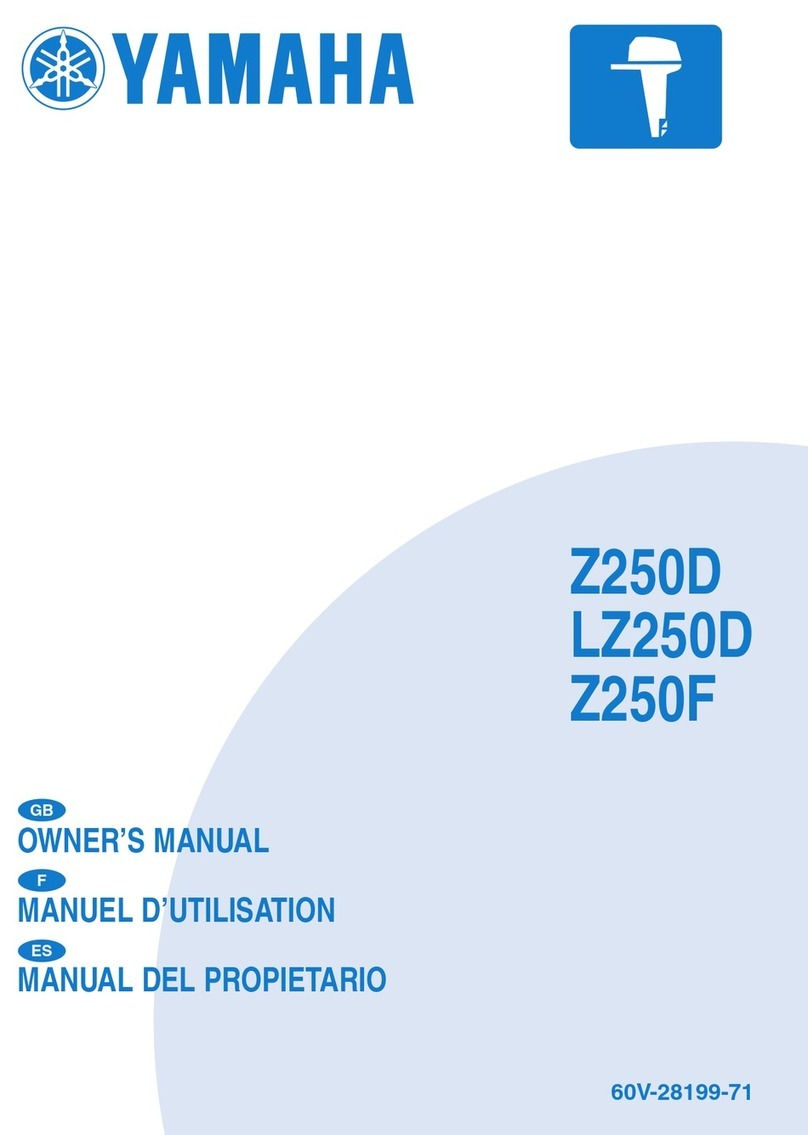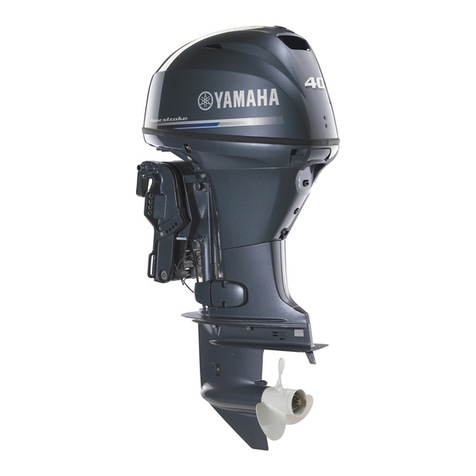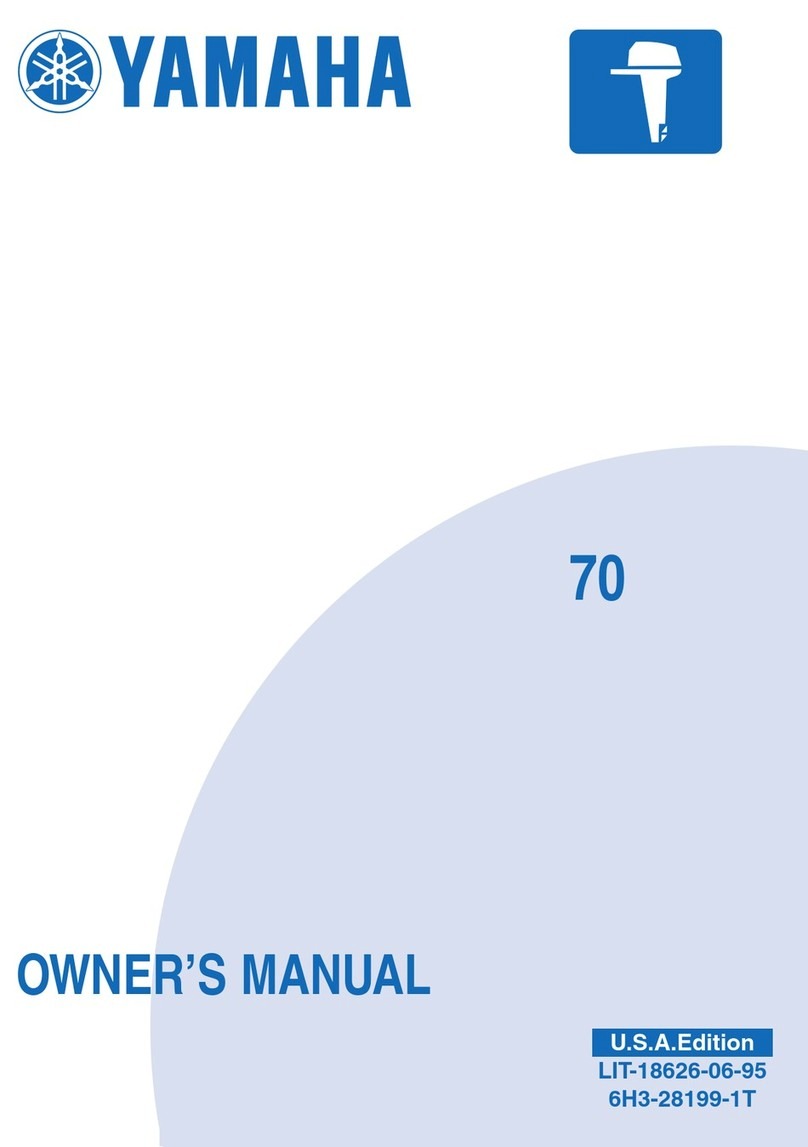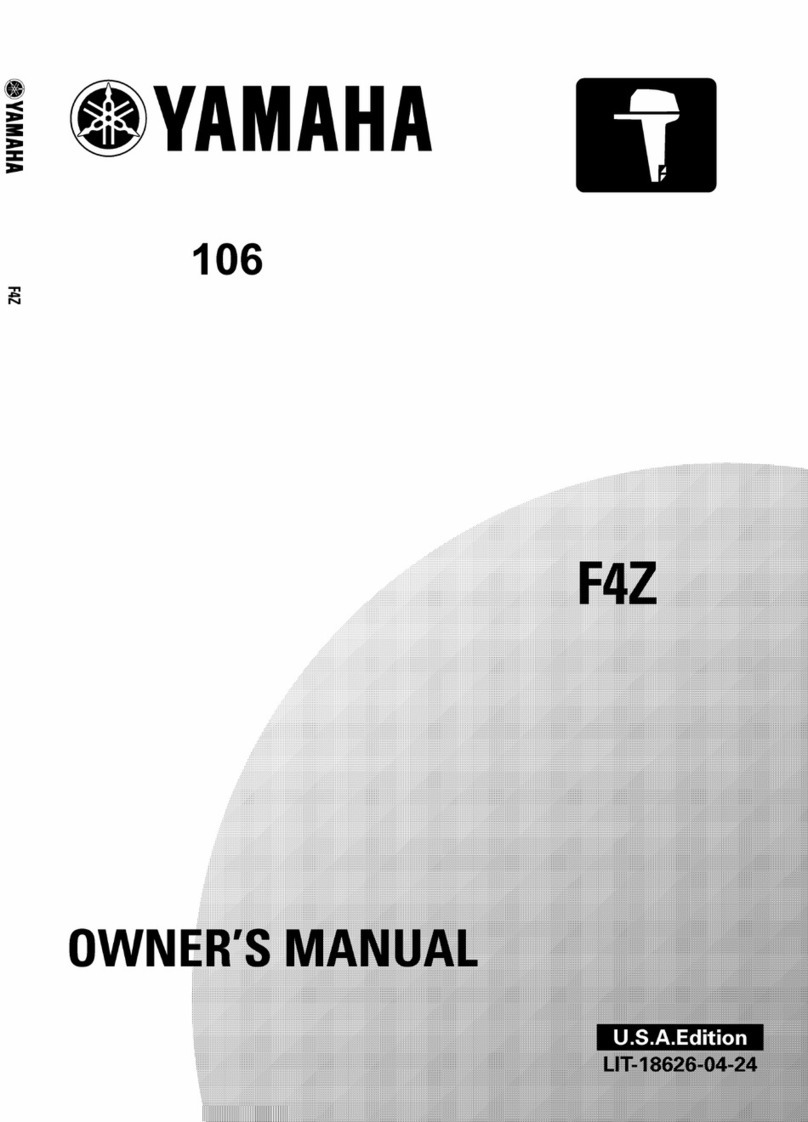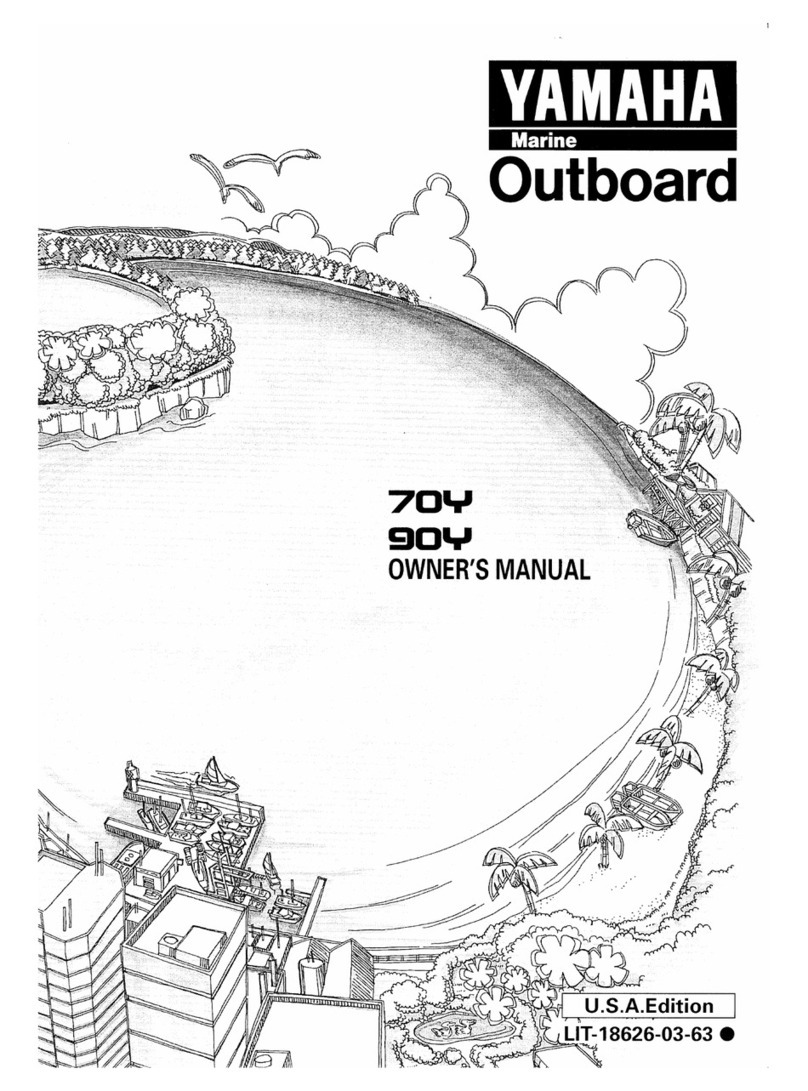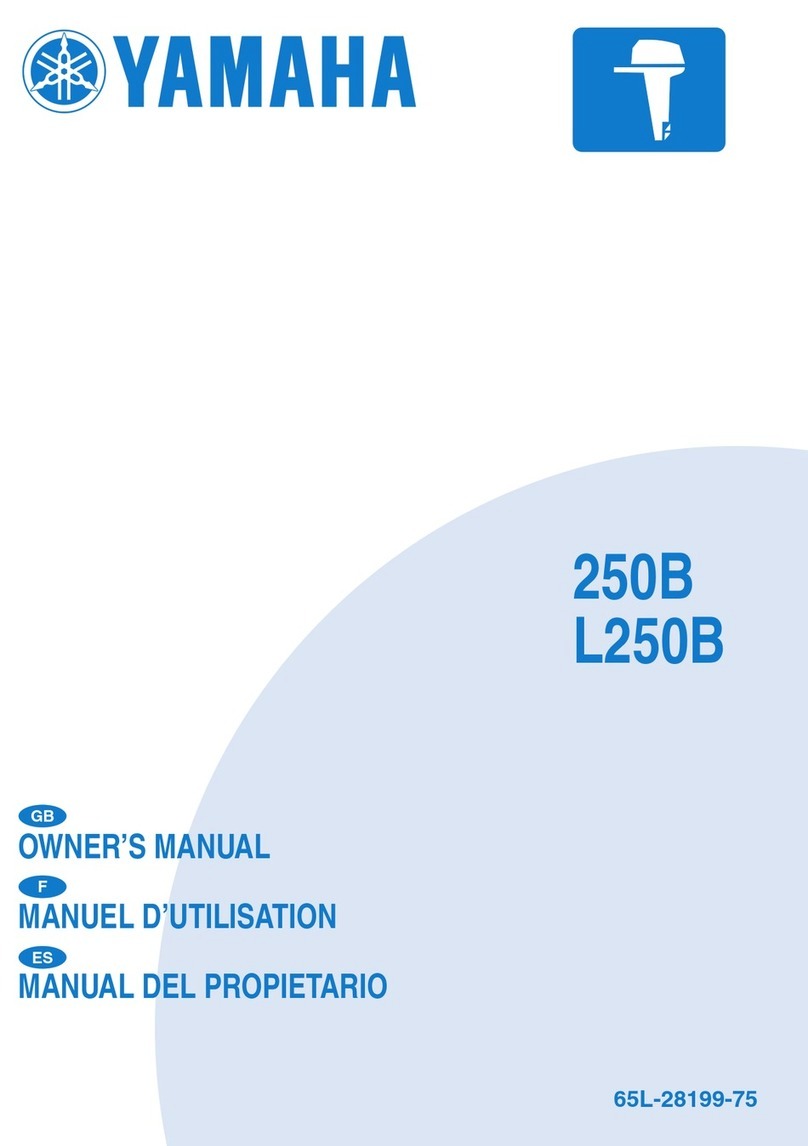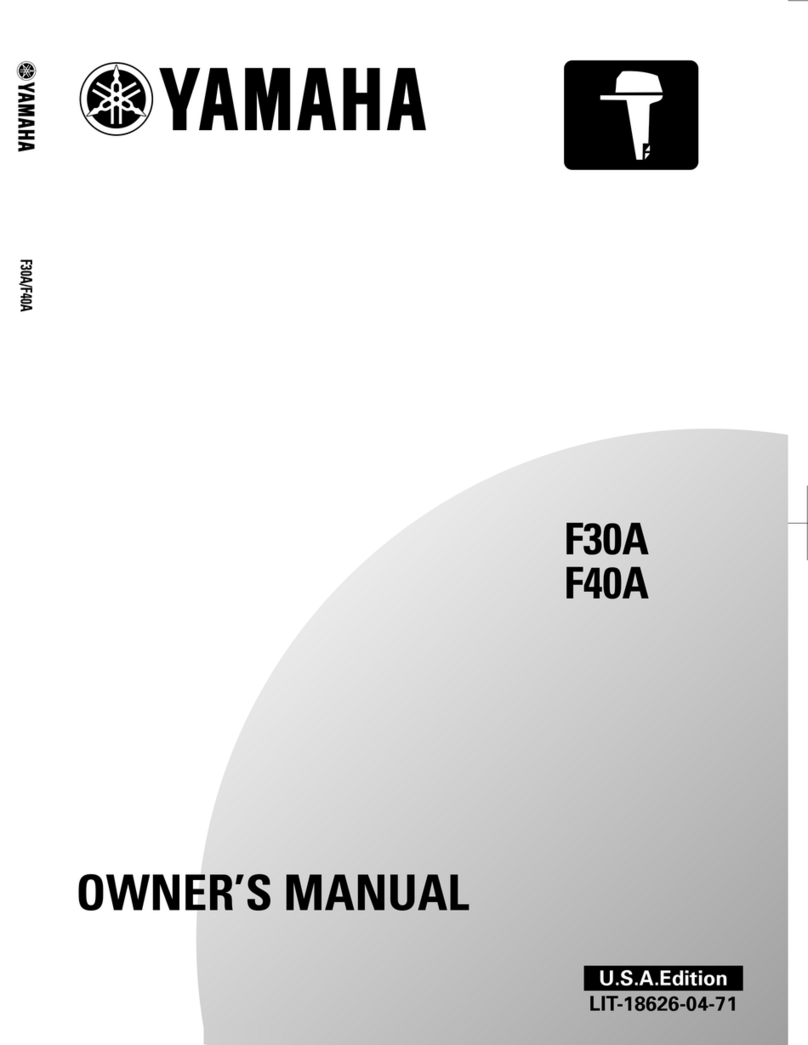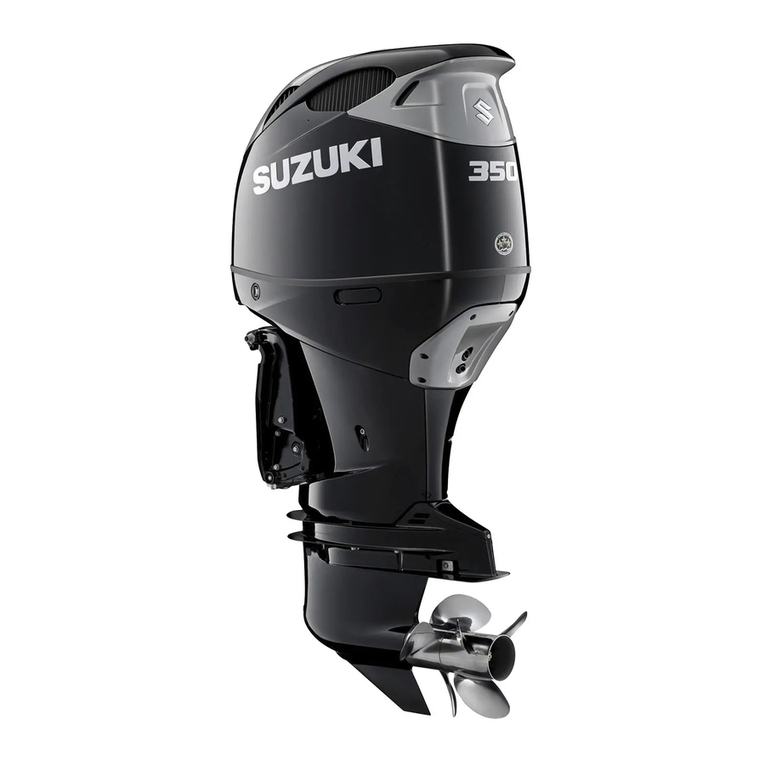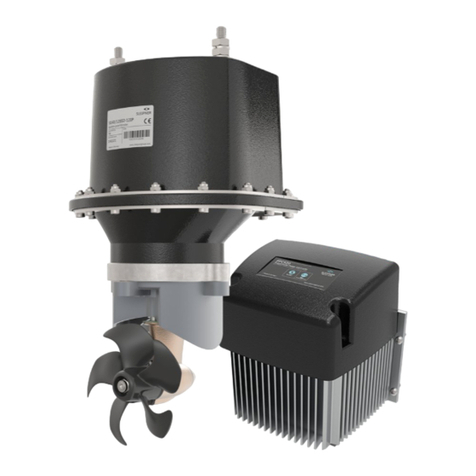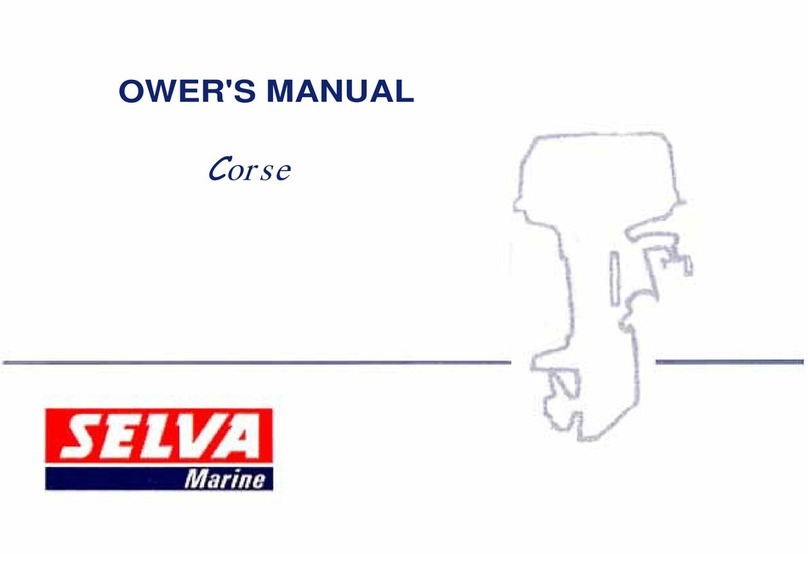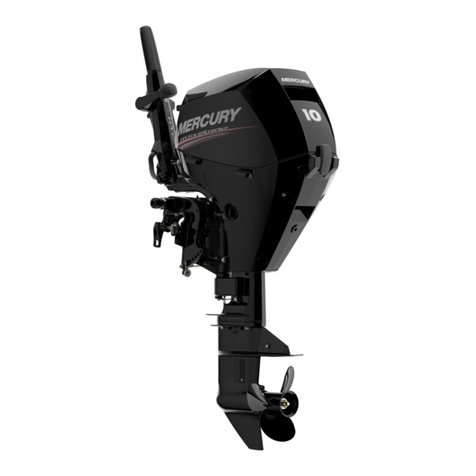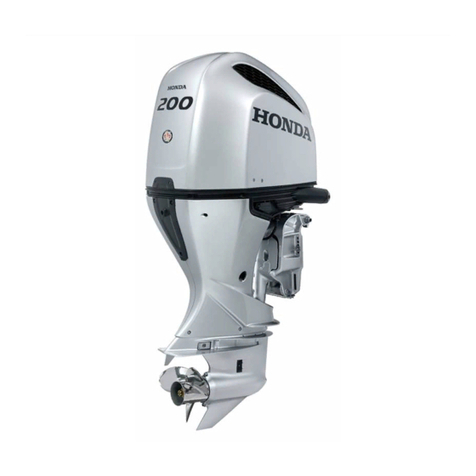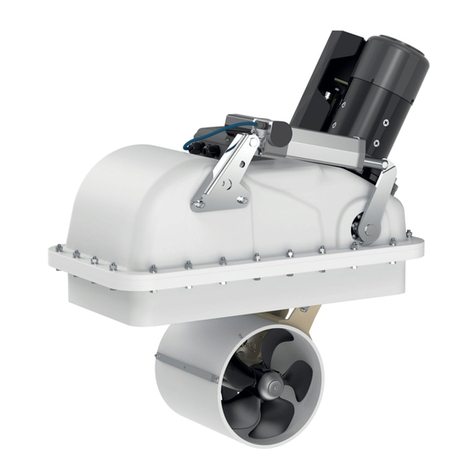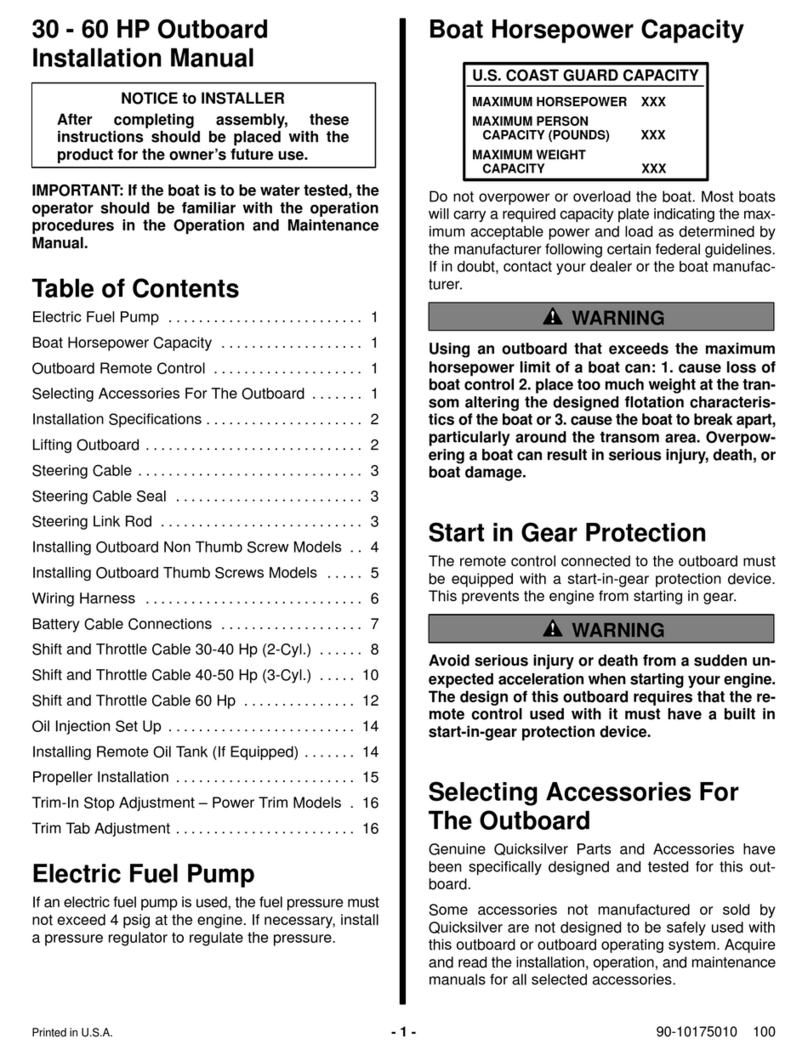
Table of contents
Hour meter (digital type).................. 25
Trip meter........................................ 26
Clock ............................................... 26
Fuel gauge ...................................... 26
Fuel warning indicator..................... 27
Low battery voltage-warning
indicator ........................................ 27
6Y8 Multifunction meters ................ 27
Tachometer unit .............................. 27
Speed & fuel meter unit .................. 31
Speedometer unit............................ 32
Fuel management meter................. 33
Warning system ............................ 33
Overheat warning............................ 33
Low oil pressure warning ................ 34
Operation ......................................... 36
Installation ..................................... 36
Mounting the outboard motor.......... 36
Breaking in engine ........................ 37
Procedure for 4-stroke models........ 37
Pre-operation checks .................... 38
Fuel ................................................. 38
Controls........................................... 38
Stop switches.................................. 38
Engine............................................. 38
Checking the engine oil level .......... 38
Filling fuel ...................................... 39
Operating engine........................... 39
Feeding fuel (portable tank) ............ 39
Starting engine................................ 40
Warming up engine ....................... 43
Manual start and electric start
models .......................................... 43
Shifting .......................................... 43
Stopping boat ................................ 45
Trolling .......................................... 45
Adjusting trolling speed................... 45
Stopping engine ............................ 45
Procedure ....................................... 45
Trimming outboard motor.............. 46
Adjusting trim angle (Power trim
and tilt) .......................................... 47
Adjusting trim angle for hydro tilt
models .......................................... 48
Adjusting boat trim .......................... 48
Tilting up and down....................... 49
Procedure for tilting up (hydro tilt
models) ......................................... 49
Procedure for tilting up (power trim
and tilt models)..............................50
Procedure for tilting down (hydro
tilt models)..................................... 52
Cruising in shallow water .............. 52
Hydro tilt models .............................52
Power trim and tilt models
models .......................................... 53
Cruising in other conditions........... 54
Maintenance .................................... 56
Specifications................................ 56
Transporting and storing outboard
motor ........................................... 58
Storing outboard motor ...................58
Procedure........................................ 59
Lubrication....................................... 60
Battery care ..................................... 60
Flushing power unit ......................... 61
Cleaning the outboard motor...........62
Checking painted surface of
motor............................................. 62
Periodic maintenance ................... 62
Replacement parts .......................... 62
Severe operating conditions............63
Maintenance chart 1........................64
Maintenance chart 2........................66
Greasing.......................................... 67
Cleaning and adjusting spark
plug ............................................... 67
Checking fuel system ...................... 68
Inspecting idling speed....................69
Changing engine oil ........................69
Checking wiring and connectors ..... 71
Exhaust leakage.............................. 71
Water leakage ................................. 71
Engine oil leakage........................... 71
Checking power trim and tilt /
power tilt system ........................... 72
Checking propeller .......................... 72
Removing propeller ......................... 73
Installing propeller ........................... 73
Changing gear oil ............................ 74

